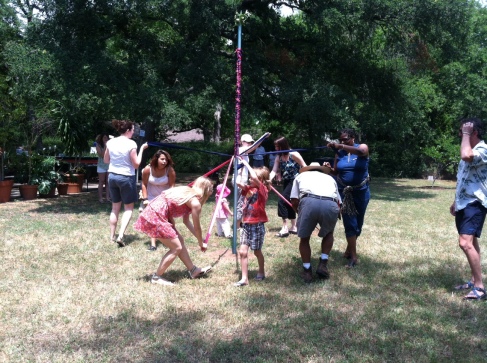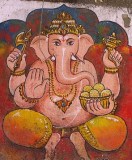It’s that time of year. Cold and flu season has hit with a vengeance. My sister-in-law recently came down with strep throat – again. Many of my yoga students have missed class in the last few weeks with a bad case of something. It’s shaping up to be one of the worst flu seasons in recent history.
I’m a strong believer that the best way to treat a cold or the flu is to prevent it. In honor of the Super Bowl this weekend, we could say the best offense is a good defense.
Trying to get over the flu is FAR more uncomfortable than taking a few extra steps to stay healthy. We have so much power to strengthen our ability to fend off the predictable onslaught of winter bugs. Even those of us who haven’t come down with any symptoms are likely expending energy fighting off the variety of microorganisms currently in circulation, so taking some extra immune-boosting precautions can help all of us tremendously.
I hope my top “stay healthy” tips below will inspire you. (For additional inspiration, check out Dr. Aviva Romm’s great blog post on how her physician and herbalist colleagues treat the flu.)
1) Sleep. MORE. Make sure you are regularly getting 7-8 hours each night. This is critical right now. Sleep is your access point to your immune reserves. At the very first inkling that something is off, put down whatever you’re doing and go to bed, and sleep as much as your body will let you. Do it again the next night.
2) Neti Pot. Every night, cleanse your sinuses using a neti pot with a saline rinse to remove any airborne germs, pollutants, and allergens that you may have breathed in that day that are just waiting for a weak moment to pounce. It is recommended to use warm distilled or purified water and 1/4 teaspoon of sea salt (non-iodized). It is important to get the right amount of salt so that it doesn’t sting the nasal passages.
3) Nasya oil. In the morning, protect your nasal passages with a medicated nasya oil (my favorite “Super Nasya” is formulated by my teacher Dr. Vasant Lad and is available at Ayurveda.com/shop). Lay down with your head tipped back and drop 2-3 drops in each nostril and sniff. The medicated oil, infused with eucalyptus and other anti-bacterial herbs, lubricates the sensitive mucus membranes of the sinuses, improving their defensive filtering power.
4) Herbal support. If you interact with lots of people, or have children bringing home their classroom’s collection of microorganisms, consider taking an immune-boosting herbal formula for a short time. It is always best to consult your health care provider before taking an herbal supplement, especially if you are taking any prescription medications, since there may be unanticipated interactions. My favorite Ayurvedic immune herb is Kalmegh (Andrographis paniculata), which is the primary ingredient in Banyan Botanicals’ Immune Support Formula. Under its latin name, it’s turning up in many mainstream immune formulas – ask at your health food store or botanical medicine source. Elderberry syrup and yarrow tea are additional immune boosters.
5) Hot ginger tea. Keep your digestion moving by drinking copious amounts of warm ginger tea throughout the day, which kindles digestive agni and keeps you hydrated, two important factors in maintaining your body’s natural ability to fight off interlopers like bacteria and viruses.
6) Avoid cold and heavy foods. These are the foods that produce Ama (the sludgy side-effect of poor digestion that clogs up our immune response). Heavy kapha-genic foods that are taxing for the body to digest divert our healing energy in order to process them – foods like cheese, iced drinks, cold milk, yogurt, ice cream, and anything fried. Stick with fresh organic fruits and well-cooked vegetables, your favorite sick-day soup, or Ayurveda’s traditional easy-to-digest kitchari. This time of year, I’m eating kitchari a couple times a week!
7) Keep your head warm. Wear a hat, even if you’re only going out for a short time, or even if you’re tempted by the thought that “it’s not THAT cold.” Kapha tends to gather in the head, and we don’t want to give it any invitation to accumulate there. Keep a scarf by the door and wear it over your throat and ears every time you go out.
(*Bonus Tip) Probiotics. If you have recently taken a course of antibiotics, be sure to stock back up on healthy intestinal flora by taking a high quality, multi-strain probiotic supplement.




























